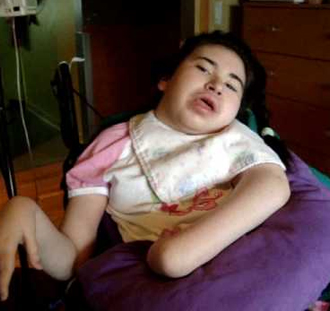
Exact incidence is unknown, but it is estimated at 1 in 10,000
SIGNS AND SYMPTOMS
STAGE 1
It begins between 6 to 18 months of age.
- Less eye contact
- Loss of interest in toys
- Hand wringing and decreasing head growth may occur
STAGE 2
It begins between ages 1 to 4 and last for few weeks to months.
- a short neck
- Loss of purposeful hand skills and spoken language
- Characteristic hand movements such as wringing, tapping, clapping, repetitive taking of hand to mouth occurs
- The child may hold the hands clasped behind the back or held at the sides, with random touching, grasping, and releasing
- The movements continue while the child is awake but disappear during sleep
- Breathing irregularities such as episodes of apnea and hyperventilation may occur, although breathing usually improves during sleep
- Some girls also display autistic-like symptoms such as loss of social interaction and communication. Walking may be unsteady and initiating motor movements can be difficult
- Slowed head growth is usually noticed during this stage
STAGE 3
It usually begins between ages 2 and 10 and can last for years.
- Apraxia, motor problems, and seizures are prominent during this stage
- there may be improvement in behavior, with less irritability, crying, and autistic-like features
- In stage III there may be more interest in the surroundings and alertness, attention span, and communication skills may improve
- Many girls remain in this stage for most of their live
STAGE 4
It can last for years or decades .
- Prominent features include reduced mobility, curvature of the spine, and muscle weakness, rigidity, spasticity, and increased muscle tone with abnormal posturing of an arm, leg
- Girls who were previously able to walk may stop walking
- Cognition, communication, or hand skills generally do not decline in stage IV
- Repetitive hand movements may decrease and eye gaze usually improves
TREATMENT
- Physical therapy
- Neurodevelopmental therapy
- Occupational therapy
- Postural correction
- Kinesio taping
- Sensory integration therapy
- Aids and appliances support (orthosis)
- Pre-vocational training
- Special education(remedial tutoring)
- Parents counselling
- Feeding training
- Wheel chair training
- PECS
